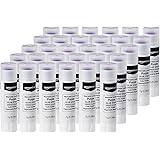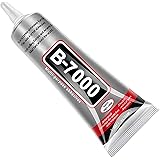Cooking in the great outdoors or on a remote job site often presents a unique challenge: how do you maintain a functional, efficient kitchen without all the amenities of home? Traditional camping setups can be bulky and inconvenient, leading to disorganized meal prep and less enjoyable experiences. But what if you could create a compact, versatile kitchen that’s easy to transport and set up, whether you’re camping under the stars or working on a new project?
The solution is simpler than you think: a DIY tiny kitchen designed for ultimate portability and flexibility. The video above demonstrates how to construct such a mobile kitchen, perfect for camping, job sites, or any situation requiring a temporary cooking station. This guide will delve deeper into the construction process, material choices, and ways to maximize your portable cooking experience, ensuring you have everything you need for delicious meals on the go.
Building Your Portable Camping Kitchen: The Foundation
Every great kitchen starts with a solid foundation, and for this DIY tiny kitchen, that means a robust countertop. The video highlights using two pieces of 3/4-inch plywood, each measuring 74 inches long and 19 inches wide, glued together to create a durable, 1 1/2-inch thick surface. This thickness is crucial for stability and provides enough material to securely mount a sink and other accessories.
After gluing, the edges often need attention. A belt sander is ideal for flattening any uneven seams, ensuring a smooth, flush surface. Rounding over sharp edges with an orbital sander and 120-grit sanding pads not only improves aesthetics but also enhances safety, preventing snags and splinters. Finally, three coats of Minwax polycrylic, applied with a foam brush, provide a protective, water-resistant seal. This finish is essential for outdoor use, safeguarding the plywood from moisture and wear.
Selecting the Right Sink and Preparing the Countertop
A top-mounting stainless steel sink from Moen, as shown in the video, is an excellent choice for a DIY tiny kitchen due to its ease of installation and durability. To install it, you’ll need to carefully trace the sink’s outline onto your prepared countertop and use a jigsaw to cut the opening. This requires precision to ensure a snug fit. Remember to measure twice and cut once!
This portable countertop is designed to attach to a sawhorse, which serves as a sturdy, collapsible stand. The video suggests using seven-inch long pieces of 1 1/2-inch aluminum angle to create robust brackets. These brackets secure the countertop to the sawhorse. It’s smart to pre-drill pilot holes for screws on the underside of the countertop for easy mounting. For the sawhorse connection, aligning the holes in pairs through both the brackets and the sawhorse is key for stability and ease of assembly.
Essential Components of Your Mobile Kitchen: Water and Waste Management
No functional kitchen is complete without a reliable water supply and an efficient drainage system. This DIY tiny kitchen ingeniously integrates these elements using simple, readily available parts.
Ingenious Water Supply from a 5-Gallon Jug
The solution for fresh water involves a 5-gallon jug coupled with a dolphin pump. This type of pump is typically designed to mount directly onto the jug’s neck, but for this setup, an extension is needed to reach the sink. This is achieved by cutting a piece of PEX tubing to extend the pump’s existing tubing. PEX is a flexible, durable, and food-safe material, making it ideal for potable water systems.
To further extend the jug’s neck into the pump, a piece of PVC pipe is used with a rubber coupling device and two hose clamps. This clever arrangement allows the entire water jug assembly to sit beneath the sink. The PVC pipe, with the PEX tube inside, passes through the sink hole and into the jug. The rubber coupling and hose clamps then create a watertight seal, ensuring your water supply is secure and easily accessible.
Efficient Drainage for a Clean Workspace
A vanity sink drain, easily sourced from a hardware store like Home Depot, is screwed directly into the sink. This connects to a short piece of vinyl hose, ensuring that all used water, or greywater, safely flows into a designated collection bucket. Proper greywater management is critical, especially when camping. Always ensure you are disposing of greywater responsibly according to local regulations to protect natural environments.
Adding a soap dispenser to the extra hole in the sink, or even considering hand sanitizer for quick clean-ups, is a thoughtful addition. When you’re outdoors or on a job site, having hand hygiene readily available is incredibly convenient. The overall design ensures that every drop of water used is captured, keeping your surrounding environment clean and tidy.
Cooking Solutions for Your Tiny Setup
The beauty of this DIY tiny kitchen lies in its adaptability, especially when it comes to cooking appliances. Depending on your power access and cooking needs, you have flexible options.
Electric Hot Plate for Indoor or Powered Sites
For indoor cooking, or whenever electricity is available, a single-burner hot plate is an excellent choice. Its compact size fits perfectly on the countertop, providing a convenient and controlled heat source. Pre-drilling holes and screwing hooks into the underside of the counter offers smart storage for pots, pans, and dish rags, keeping everything within reach and organized in your mobile kitchen.
Propane Stove for Off-Grid Adventures
When off-grid or in remote locations without electricity, a Coleman propane stove (or similar portable gas stove) becomes your go-to cooking solution. These stoves are reliable, powerful, and specifically designed for outdoor use. They offer the flexibility to cook various meals, from frying potatoes to simmering a hearty beef stew, as demonstrated with Blue Apron’s recipe.
The adjustable legs of the sawhorse are a brilliant feature, allowing you to raise the countertop to accommodate a mini fridge underneath. This provides valuable cold storage for ingredients, especially useful when utilizing meal kits like Blue Apron, which ship fresh, insulated ingredients.
Maximizing Your Compact Kitchen Space with Smart Solutions
Living and cooking in a tiny space requires smart organization and efficient use of every inch. This DIY tiny kitchen is designed with versatility in mind, but there are always ways to enhance its functionality and convenience.
The Blue Apron Advantage for Mobile Meals
The video highlights Blue Apron as a perfect companion for this portable kitchen, and for good reason. Blue Apron delivers all the farm-fresh ingredients you need, pre-portioned and packed tightly in an insulated package. This eliminates grocery store trips and reduces waste from unused ingredients, which is incredibly beneficial when space is limited, like in a camping or job site scenario. With options like the two-person plan or family plan, and up to eight recipes weekly, you can enjoy chef-designed meals even without a full kitchen. Prices start as low as $9.99 per serving, and meals typically range from 500 to 800 calories per person.
Preparing meals becomes a breeze with Blue Apron’s easy-to-follow recipe cards. Even without an oven, as shown with the beef stew recipe, simple substitutions like frying potatoes instead of baking them allow for delicious results in as little as 26 minutes, often with minimal cleanup. The convenience of fresh, local ingredients delivered right to your doorstep, coupled with the compact nature of their packaging, makes them an ideal choice for outdoor adventures like camping or events such as Burning Man.
Versatility Beyond the Campsite
While often called a DIY tiny kitchen for camping, this mobile setup’s utility extends far beyond just outdoor adventures. Imagine using it on a construction job site, providing a convenient space for workers to prepare meals and enjoy fresh coffee. It’s also ideal for filming in warehouses or large photo studios that lack kitchen facilities, allowing crews to stay fed without leaving the premises.
This compact kitchen can easily be stored in the back of a car or truck, making it suitable for tailgating events, backyard barbecues, or even as an auxiliary kitchen during home renovations. Its quick setup time—less than five minutes—means you can deploy it whenever and wherever needed, offering unparalleled convenience and flexibility.







